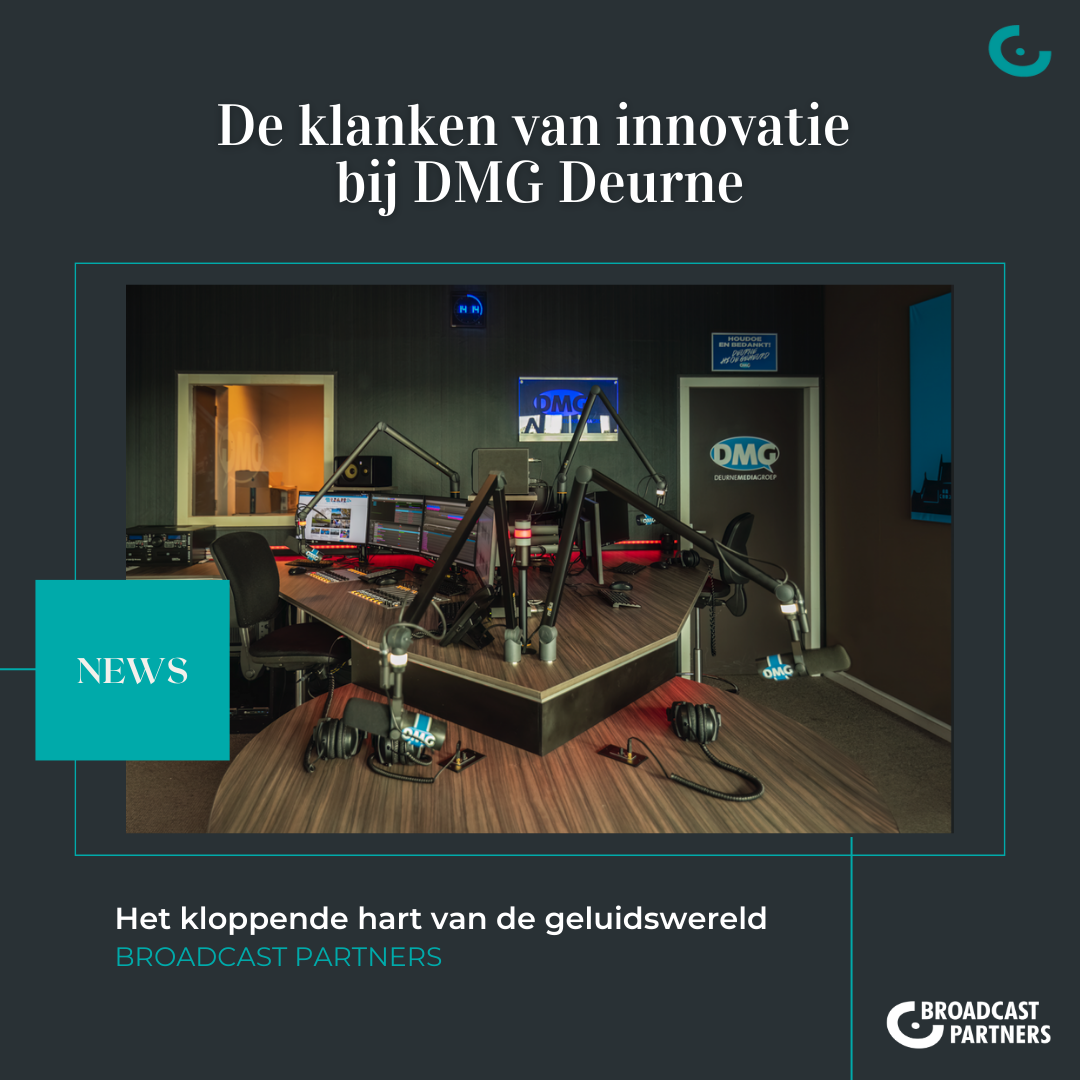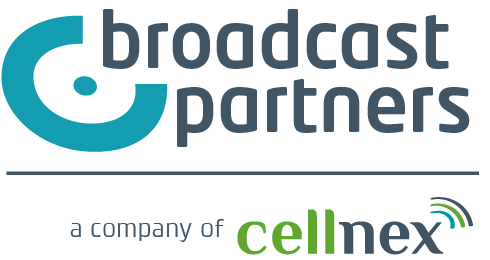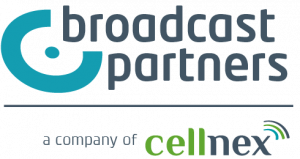At DMG Deurne’s vibrant studio, audio equipment is the beating heart of their sound world. During a conversation with the general coordinator, it became clear how this addition brings every sound and voice to life.

Can you tell a little more about DMG Deurne and its origins?
There has been no local broadcaster in Deurne since 1994. Our broadcaster was created in 2011 because Deurne wanted to have a local broadcaster. We started with a large group of enthusiastic volunteers. In 2013 it was decided to professionalize. One reason is to make broadcasting more organized. Over the past 12 years, we have grown tremendously, both online and offline. We are extremely proud of that.
What do you think is the power of radio?
The great thing about radio is that you can communicate with the listener at home, building a rapport with the individuals “on the other end” of the radio. As an individual, you can let people hear a whole world of music and sound to which each listener has their own experience. You control everything yourself and can put your freedom and creativity into the broadcasts you make. In addition, as a local radio station, you can be very close to the people. Something much more difficult for regional and national radio stations. That’s why at DMG we make sure that everything we do has relevance in the local community. Whether it’s a news story or a game, we put a local spin on everything so that it relates to Deurne and its residents. That is the strength of DMG; we are at the center of society and are a connecting factor in it through, for example, interaction we have with residents, associations, foundations, entrepreneurs and the municipality.
Why did you make the decision to make technological upgrades and implement advanced equipment in your studio?
We noticed that continuity was becoming an issue. Equipment was increasingly failing or we were experiencing outages. The moment a technician has to keep coming by to get that fixed, you do know it’s time to buy new equipment. The studio was just very outdated. So we were able to save for a long time to set up such a beautiful studio with professional equipment. This also ensured that we had ample time to think about exactly how we wanted everything.
How has the Axia iQ mixing console enabled you to add more depth and detail to the sound production of your broadcasts?
First of all, it’s quite an advance because it’s a digital mixing console. Before this, we worked with an analog Dateq BCS 70. Since this mixer was from 1990, it was starting to show several kinks. The Axia iQ mixing table, offers us a lot of flexibility. It can be set up according to your own needs and desires. Moreover, the table is very uncluttered. For detail, we chose a table similar in appearance to an analog table, so it’s not a big transition for the disc jockeys. Finally, the displays are ideal. Despite not being very large, you can name everything on the table. We used to have to put stickers, now you can type it in and it’s in the display. It can be that easy.
What has surprised you most about the upgrades you have made?
I am pleasantly surprised by AerOn’s new features. For example, you get an alert if you have a record duplicated in your playlist. This prevents duplicate numbers in the same day, as well as in the day before and after. In addition, we have the Planner Expert version. This includes an analysis tool. You can then quickly and easily see how the music and promos are scheduled throughout the week AND check that the rotation runs nicely diagonally through the week.
How have the technology upgrades helped you attract new listeners and increase engagement from existing listeners?
We were previously working with PC Radio Express, which limited our options. We’re happy that AerOn’s scheduling options offer much more control over how your music mix sounds. Especially for our Hot AC format, it is nice that in the ‘artist separations’ you can now specify for each artist what the minimum time in which another song by the same artist may appear. That ‘offset’ is a lot lower for a current artist like P!nk or Ed Sheeran than it is for Michael Jackson or Madonna, for example. This is one of the valuable tools in AerOn that allows you to fine-tune your music even more based on the daily rhythms and tastes of your listeners. AerOn offers a wide range and options, which has improved our musical product. Therefore, I assume it will bring more listeners and longer listening times.
How has the Prism 4×4 quadruple voice processor contributed to the sound quality of your broadcasts?
Custom tuning of the voice processor makes the microphones sound full and clear. This allows the disc jockeys to effortlessly rise above the music, but at the same time they can remain “deep in the music”-and intelligible. They don’t have to raise their voice or open the slide further, as it were, that is all taken care of by Symetrix’s Prism. It is also nice that the voices of guests who are not used to sitting close to microphone, for example, are amplified to the appropriate level. With the right settings, the expander/noise gate attenuates unwanted background noise in the process. Another big advantage with this unit is its flexibility; you can completely build and adjust its operation with a block diagram in the included software to suit your needs. Furthermore, it is of course super that you then immediately have voice processing for 4 microphones that then all sound identical.
Can you mention some advantages of using the Comrex Vh2 for your broadcasts over more traditional methods of making external calls on radio?
We connected it so that you can operate two lines on the same number of the device. We can now with one number, receive two calls. In addition, we can also dial out on one line and be dialed in at the same time. So it gives us a lot of flexibility to make external calls on the radio. In the past, our disc jockeys would sometimes fiddle with Skype or WhatsApp, but the Comrex gives us the ability to have high audio quality conversations without losing the connection.
Can you tell a little bit about a great moment you had thanks to your advanced broadcast equipment?
Which is a fun fact; all the people who come in, whether they are people from the professional world or an alderman who opened the studio, everyone is impressed by the look of the studio. We chose a warm “living room” look, because for us the atmosphere in the studio is important. On the other hand, we opted for quality and professional solutions. We waited a long time to invest, but we wanted to do it right the first time. It is then very nice to receive compliments on that.
Have there been times when technology and equipment has stimulated your creativity in the programs?
Anyway, the pleasant working environment is stimulating to the creativity of the program makers. The combination of a cozy, yet sleek-and professional-equipment allows DJs to focus entirely on content and performance. We also adopted creative solutions, such as the ability to record phone calls off-air in an audio editor. We can then edit those and play them via the Axia mixing console later in the broadcast. This leads to new creative ideas within the team to make the broadcasts even more appealing.
Can you share some examples where M!ka monitor and microphone arms have improved presenters’ comfort?
Disk jockeys often want to be able to move the microphone up and down a bit. The M!ka arms make no noise, unlike the old-fashioned arms we had before. Moreover, they move so smoothly that you can even move the microphone back and forth with a little finger. So there is no force involved. I’ve mentioned the word “flexibility” a lot, but again, this is a big advantage. Whether someone wants the microphone close by or far away, the possibilities are all there, especially since our broadcaster has both long- and short-arm versions.
What makes DMG Deurne unique from other radio stations and how did the equipment help in this?
We have previously always worked with a very simple version of PCRadio Express. Now, with AerOn it’s a big improvement because the possibilities are endless. In addition, our sound processing with the Orban Optimod 5500 sounds very good. That completes the whole radio product toward the listener. Through a custom setting, we have a loud but transparent sound. This fits well with our music format and is well liked by our listeners. We may soon upgrade to an Optimod 5700i to be prepared for possible DAB broadcasts and fine-tune further.
Finally, can you share some future plans where technology will play a key role in DMG Deurne’s growth as a radio station?
We want to maintain the identity of the broadcasters as part of the regional broadcasting formation, so that we continue to maintain the connection with the listeners as it is today. We want to do this by further professionalizing the broadcasters organizationally, journalistically and technically. Important to our future is maintaining our identity and reputation that we have built. Our “branding” of all products also plays a big role in this. We safeguard all these factors, for example, with a house style manual for news editors, as well as for radio producers. We also mentor staff with workshops and coaching sessions for both current volunteers and those new to the program.
In conversation with Ivo Boudewijns, General Coordinator of DMG Deurne






